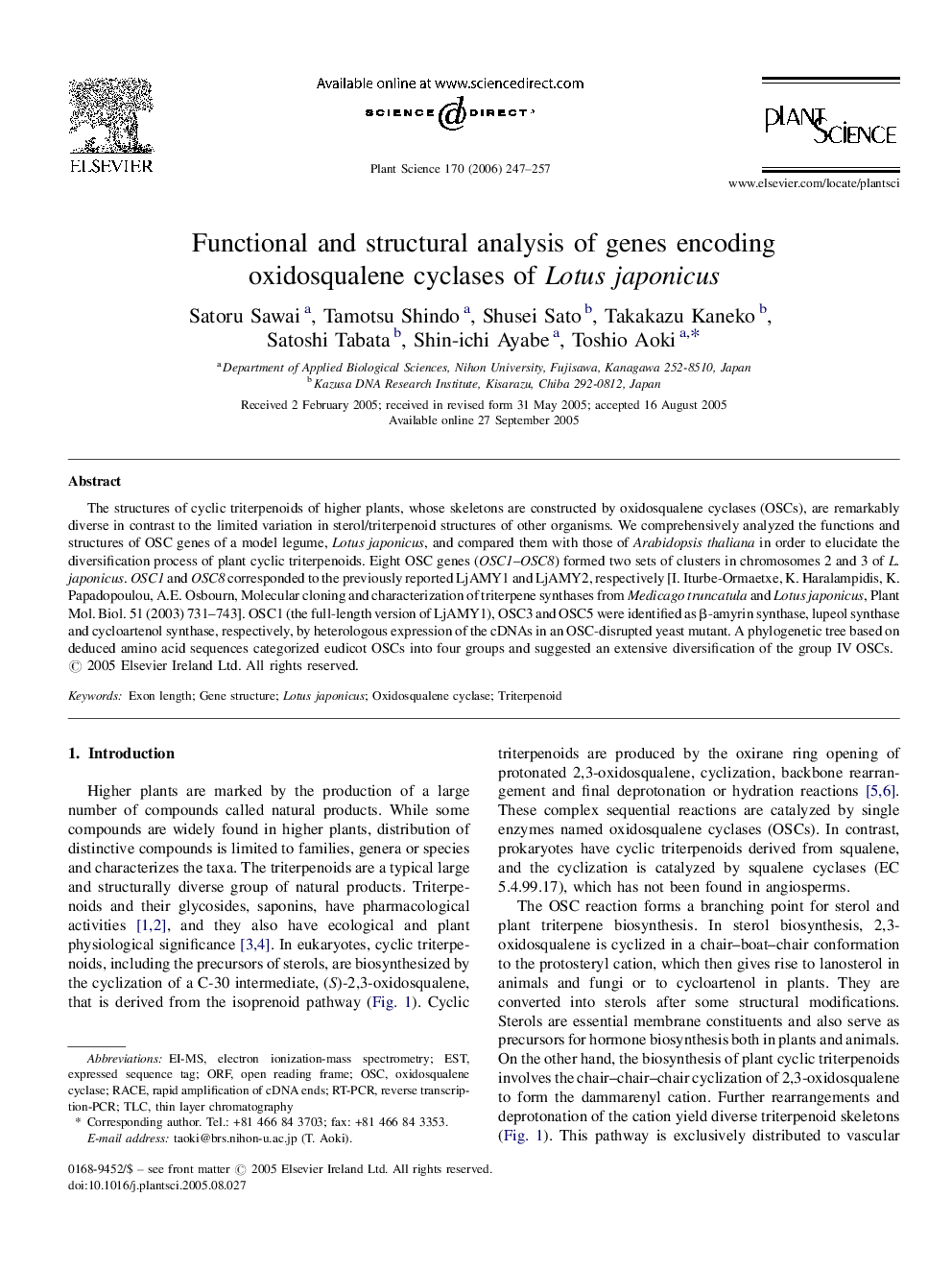| Article ID | Journal | Published Year | Pages | File Type |
|---|---|---|---|---|
| 2018622 | Plant Science | 2006 | 11 Pages |
The structures of cyclic triterpenoids of higher plants, whose skeletons are constructed by oxidosqualene cyclases (OSCs), are remarkably diverse in contrast to the limited variation in sterol/triterpenoid structures of other organisms. We comprehensively analyzed the functions and structures of OSC genes of a model legume, Lotus japonicus, and compared them with those of Arabidopsis thaliana in order to elucidate the diversification process of plant cyclic triterpenoids. Eight OSC genes (OSC1–OSC8) formed two sets of clusters in chromosomes 2 and 3 of L. japonicus. OSC1 and OSC8 corresponded to the previously reported LjAMY1 and LjAMY2, respectively [I. Iturbe-Ormaetxe, K. Haralampidis, K. Papadopoulou, A.E. Osbourn, Molecular cloning and characterization of triterpene synthases from Medicago truncatula and Lotus japonicus, Plant Mol. Biol. 51 (2003) 731–743]. OSC1 (the full-length version of LjAMY1), OSC3 and OSC5 were identified as β-amyrin synthase, lupeol synthase and cycloartenol synthase, respectively, by heterologous expression of the cDNAs in an OSC-disrupted yeast mutant. A phylogenetic tree based on deduced amino acid sequences categorized eudicot OSCs into four groups and suggested an extensive diversification of the group IV OSCs.
